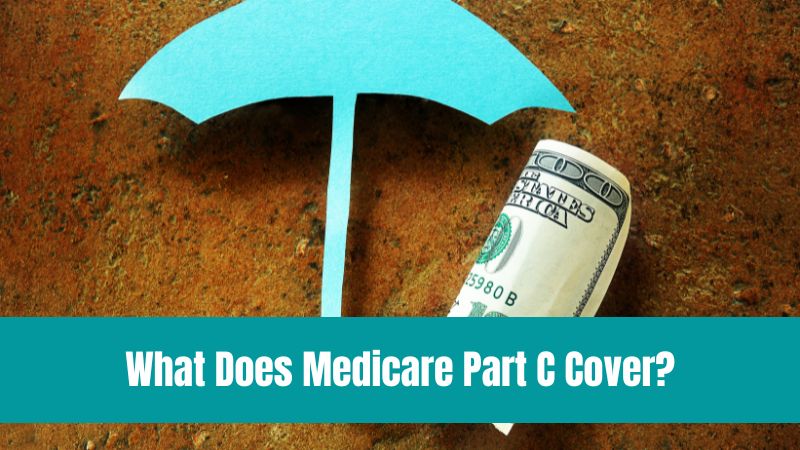Medicare Part C, also known as Medicare Advantage, provides a comprehensive alternative to Original Medicare, combining hospital and medical coverage with additional benefits like prescription drugs, vision care, dental coverage, and wellness programs.
Introduction to Medicare Part C
Medicare Part C, also known as Medicare Advantage, is a comprehensive health insurance option for individuals eligible for Medicare. It serves as an all-in-one alternative to Original Medicare. Medicare Advantage Plans are offered by private companies approved by Medicare, combining hospital insurance (Part A) and medical insurance (Part B) with additional benefits, which can include prescription drugs, dental, vision, and wellness programs. These plans are offered by [private insurance companies].Medicare Advantage (Part C) is an alternative plan from private companies approved by Medicare, allowing beneficiaries a range of choices tailored to their specific health needs and preferences.
The introduction of Medicare Part C aimed to provide more comprehensive coverage options for beneficiaries, addressing gaps not covered by Original Medicare. For instance, by enrolling in a Medicare Advantage Plan, beneficiaries can enjoy the convenience of having their Medicare benefits managed under a single plan, potentially reducing [out-of-pocket costs] Medicare Part C covers routine dental care, vision care, hearing care, and wellness programs, and provides access to additional services not available with Original Medicare.
Understanding the Coverage of Medicare Part C
Basic Coverage
At its core, Medicare Part C covers all the services that Original Medicare covers but often with different cost structures and additional benefits. This includes inpatient hospital stays, outpatient medical services, and preventive care. For example, a beneficiary might find that their Medicare Advantage Plan covers a routine surgery with a copayment significantly lower than what would have been out-of-pocket with Original Medicare.
Moreover, many Medicare Advantage Plans offer emergency and urgent care, emphasizing the importance of access to immediate healthcare services without worrying about the financial implications. These plans also have an annual out-of-pocket limit, which can provide significant financial protection by capping the amount beneficiaries have to spend on covered services in a year.
Additional Benefits
One of the most attractive features of Medicare Part C is the inclusion of additional benefits not covered by Original Medicare. Vision care, for example, is commonly covered under Medicare Advantage Plans, offering beneficiaries coverage for eye exams and eyeglasses, which can be crucial for maintaining good eye health as one ages.
Similarly, dental coverage is often included, covering routine check-ups, cleanings, and necessary procedures that are essential for oral health but not covered under Original Medicare. Additionally, wellness programs and fitness benefits, such as gym memberships, are increasingly being offered as part of Medicare Advantage Plans, promoting a proactive approach to health and wellness among beneficiaries.
Comparing Medicare Part C with Original Medicare
A significant difference between Medicare Part C and Original Medicare is the inclusion of prescription drug coverage in many Medicare Advantage Plans. This is a vital benefit for many beneficiaries, as Original Medicare does not typically cover prescription medications.
Furthermore, Medicare Part C plans can offer a more cost-effective solution for beneficiaries. They often come with lower out-of-pocket maximums and provide extra benefits, such as dental and vision care, which are not available with Original Medicare. This comprehensive approach to coverage can result in significant savings and improved access to healthcare services for beneficiaries.
 Enrollment and Eligibility for Medicare Part C
Enrollment and Eligibility for Medicare Part C
To be eligible for Medicare Part C, individuals must first be enrolled in both Medicare Part A and Part B and reside within the plan’s service area. It’s important to note that people with end-stage renal disease are generally not eligible for Medicare Advantage Plans, except under certain conditions.
The enrollment process involves comparing different Medicare Advantage Plans available in one’s area, considering factors such as coverage options, network restrictions, and costs. Beneficiaries can enroll during the initial enrollment period when they first become eligible for Medicare or during the annual Medicare Open Enrollment period.
Costs Associated with Medicare Part C
Medicare Part C plans may come with their own set of costs, including monthly premiums, deductibles, and copayments for services. While some plans offer $0 premium options, beneficiaries are still responsible for paying the Medicare Part B premium. However, the overall costs are often capped, providing a limit on out-of-pocket expenses for covered services.
How to Choose the Right Medicare Part C Plan
Choosing the right Medicare Part C plan involves careful consideration of one’s healthcare needs and preferences. It’s essential to review the network of doctors and hospitals, the prescription drug formulary, and the additional benefits like vision, dental, and wellness programs. By evaluating these factors, beneficiaries can select a plan that best fits their health needs and budget.
Personalized Assistance from Manatee Insurance Solutions LLC
At Manatee Insurance Solutions LLC, we specialize in helping individuals navigate the complexities of Medicare Part C and find the plan that best suits their unique needs. Our team, led by Linda Hagan, is dedicated to providing personalized assistance, ensuring that beneficiaries make informed decisions about their Medicare coverage. For more information and personalized assistance, contact us at (352) 221-3779 or visit our website at https://manateeins.com/.




